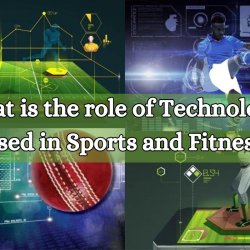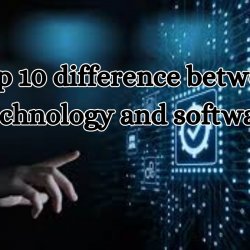What are 3 of the uses of biotechnology today?


What are 3 of the uses of biotechnology today?
Introduction
Introduction to Biotechnology: Unlocking the Potential of Living Organisms
You may have heard the term “biotechnology” being used more frequently in recent years, but what exactly does it mean? In simple terms, biotechnology is the use of living organisms or their components to develop or modify products for specific purposes. This cutting edge field has opened up a world of possibilities and has numerous applications in various industries such as medicine, agriculture, and environmental science.
One of the main uses of biotechnology today is in medicine. It has revolutionized the way we diagnose and treat diseases by harnessing the power of living organisms. The production of medicines, known as biopharmaceuticals, involves using genetically modified bacteria or other cells to produce proteins that can be used as drugs. These proteins can range from insulin for diabetes to growth hormones for treating rare genetic disorders. Biotechnology has also played a crucial role in developing vaccines against deadly diseases like COVID19.
In agriculture, biotech has been used to improve crop yields and create plants with desirable traits. This is achieved through genetic modification, where specific genes are inserted into plants to give them characteristics such as resistance to pests, drought tolerance or increased nutritional value. These genetically modified crops have been instrumental in addressing food insecurity and reducing the use of harmful pesticides.
The use of biotechnology has also had a significant impact on environmental science. One example is bioremediation, the use of living organisms to clean up pollutants in soil or water. Bacteria and fungi are capable of breaking down toxic substances into harmless byproducts, making them an eco-friendly solution for cleaning up contaminated sites.
Medical Applications of Biotechnology
- Genetic Engineering and Gene Therapy:
Gene Editing: Techniques such as CRISPR-Cas9 enable precise modification of genes. This has potential applications in correcting genetic defects responsible for various diseases.
Gene Therapy: Biotechnology is used to introduce or modify genetic material to treat or prevent diseases. This includes delivering therapeutic genes to replace or supplement faulty genes.
- Vaccines:
Recombinant DNA Technology: Biotechnology plays a key role in the development of vaccines. Recombinant DNA technology is used to produce recombinant vaccines, where specific viral or bacterial genes are inserted into host cells to generate antigens for immune response.
- Biopharmaceuticals:
Production of Biologics: Biotechnology is instrumental in producing biopharmaceuticals, which are therapeutic agents derived from living organisms. This includes monoclonal antibodies, vaccines, and other protein-based drugs.
- Stem Cell Therapy:
Regenerative Medicine: Biotechnology contributes to stem cell research and applications in regenerative medicine. Stem cell therapy holds potential for treating various conditions, such as neurodegenerative diseases, heart disease, and injuries.
- Diagnostic Tools:
Biological Markers: Biotechnology is used to identify and analyze biological markers (biomarkers) associated with diseases. This aids in the development of diagnostic tools for early detection and monitoring of conditions.
Agricultural and Environmental Uses of Biotechnology
Agricultural Uses:
Genetically Modified Crops (GMOs):
- Improved Crop Traits: Biotechnology has enabled the development of genetically modified crops with desirable traits such as resistance to pests, diseases, and environmental stress, as well as improved nutritional content.
- Herbicide Tolerance: Some GMOs are engineered to be tolerant to specific herbicides, allowing for more efficient weed control without harming the crop.
- Drought Resistance: Biotechnological approaches aim to enhance crops’ ability to withstand drought conditions, contributing to more resilient agriculture in water-scarce regions.
Precision Agriculture:
- Data-Driven Farming: Biotechnology, combined with data analytics and sensor technologies, facilitates precision agriculture. This approach involves optimizing field-level management with regard to crop farming based on data-driven insights.
- Remote Sensing: Satellite imagery and other remote sensing technologies, often integrated with biotechnological applications, help monitor crop health, assess soil conditions, and make informed decisions for better resource management.
Biological Pest Control:
- Biopesticides: Biotechnology contributes to the development of biopesticides, which are derived from living organisms. These environmentally friendly alternatives help control pests while minimizing the use of chemical pesticides.
- Genetically Engineered Insects: Research is ongoing in the genetic engineering of insects to control crop-damaging pests. For example, genetically modified mosquitoes are being explored to reduce the transmission of diseases like malaria.
Environmental Uses:
Bioremediation:
- Microbial Biotechnology: Bioremediation utilizes microorganisms to break down or neutralize pollutants in the environment. Biotechnological advancements enhance the efficiency of microbial bioremediation processes for soil and water cleanup.
- Phytoremediation: Certain plants are genetically engineered to absorb and accumulate pollutants, aiding in the removal of contaminants from soil and water.
Waste Management:
- Biodegradable Plastics: Biotechnology is involved in the development of biodegradable plastics, reducing the environmental impact of plastic waste.
- Enzymatic Processes: Enzymes derived from biotechnological processes are used in waste treatment, breaking down organic matter and pollutants.
Bioenergy Production:
- Biofuels: Biotechnology plays a role in the production of biofuels, such as biodiesel and bioethanol, using crops or microorganisms that can efficiently convert biomass into energy.
- Genetic Engineering for Energy Crops: Genetic modification is explored to enhance the energy content and efficiency of crops used for bioenergy production.
Industrial Applications of Biotechnology
Biofuels and Energy:
- Bioethanol and Biodiesel: Biotechnology is employed to convert biomass, such as crops or algae, into biofuels like bioethanol and biodiesel as more sustainable alternatives to traditional fossil fuels.
- Biogas Production: Anaerobic digestion of organic materials, facilitated by biotechnology, produces biogas that can be used for energy generation.
Industrial Enzymes:
- Detergent Enzymes: Enzymes produced through biotechnological processes are used in detergents to enhance cleaning efficiency.
- Textile Enzymes: Enzymes are applied in the textile industry for processes like desizing, bleaching, and finishing.
- Paper and Pulp Industry: Biotechnologically derived enzymes are used in the paper and pulp industry to improve the efficiency of pulp processing.
Environmental Management:
- Bioremediation: Biotechnology supports environmental cleanup through bioremediation, using microorganisms to degrade or detoxify pollutants in soil and water.
- Waste Treatment: Biotechnological processes are applied to treat industrial wastewater and manage solid waste more efficiently.
Ethical Considerations in Biotechnology Usage
- Equity and Access:
Access to Biotechnological Advances: Ensuring equitable access to biotechnological advancements and benefits is an ethical consideration. It is important to avoid exacerbating existing social, economic, and health disparities.
Global Equity: Biotechnological applications should consider global equity, addressing the needs of populations in both developed and developing countries and avoiding exploitation of vulnerable communities.
- Environmental Impact:
Ecological Consequences: The release of genetically modified organisms (GMOs) into the environment raises concerns about potential ecological consequences. Ethical considerations involve assessing and mitigating the environmental impact of biotechnological applications.
Biodiversity Preservation: Biotechnological interventions, such as the use of genetically modified crops, should be guided by ethical principles that consider the potential impact on biodiversity and ecosystems.
- Dual-Use Concerns:
Bioweapons and Misuse: The potential for biotechnological advancements to be misused for harmful purposes, including the development of bioweapons, is a significant ethical concern. Measures to prevent dual-use and ensure responsible research and innovation are essential.
Advancements in Biotechnology Research
Artificial Intelligence (AI) Integration:
- AI-driven Drug Discovery: Integration of artificial intelligence and machine learning in drug discovery processes, accelerating the identification of potential drug candidates and predicting their efficacy.
- Bioinformatics and Data Analysis: Advanced bioinformatics tools and computational methods for the analysis of large-scale biological data, genomics, proteomics, and metabolomics.
3D Bioprinting:
- Organ Printing: Advancements in 3D bioprinting technology for the fabrication of functional tissues and organs. This technology holds potential for organ transplantation and tissue engineering.
- Customized Implants: Research on 3D-printed implants and prosthetics tailored to individual patient needs, improving biocompatibility and functionality.
Environmental Biotechnology:
- Bioremediation Techniques: Research on biotechnological approaches for environmental cleanup, including the use of microorganisms to degrade pollutants and remediate contaminated sites.
- Carbon Capture and Utilization: Exploration of biotechnological solutions for capturing and utilizing carbon dioxide, contributing to climate change mitigation efforts.
Advancements in Diagnostics:
- Liquid Biopsies: Progress in liquid biopsy techniques for non-invasive detection of cancer and other diseases through the analysis of circulating biomarkers, such as circulating tumor DNA (ctDNA).
- Point-of-Care Diagnostics: Development of rapid and portable diagnostic tools for use at the point of care, enhancing accessibility to healthcare in resource-limited settings.
You can also read:
almabetter data science course reviews
almabetter data science pay after placement
excelr data science course reviews






Ingen kommentarer endnu